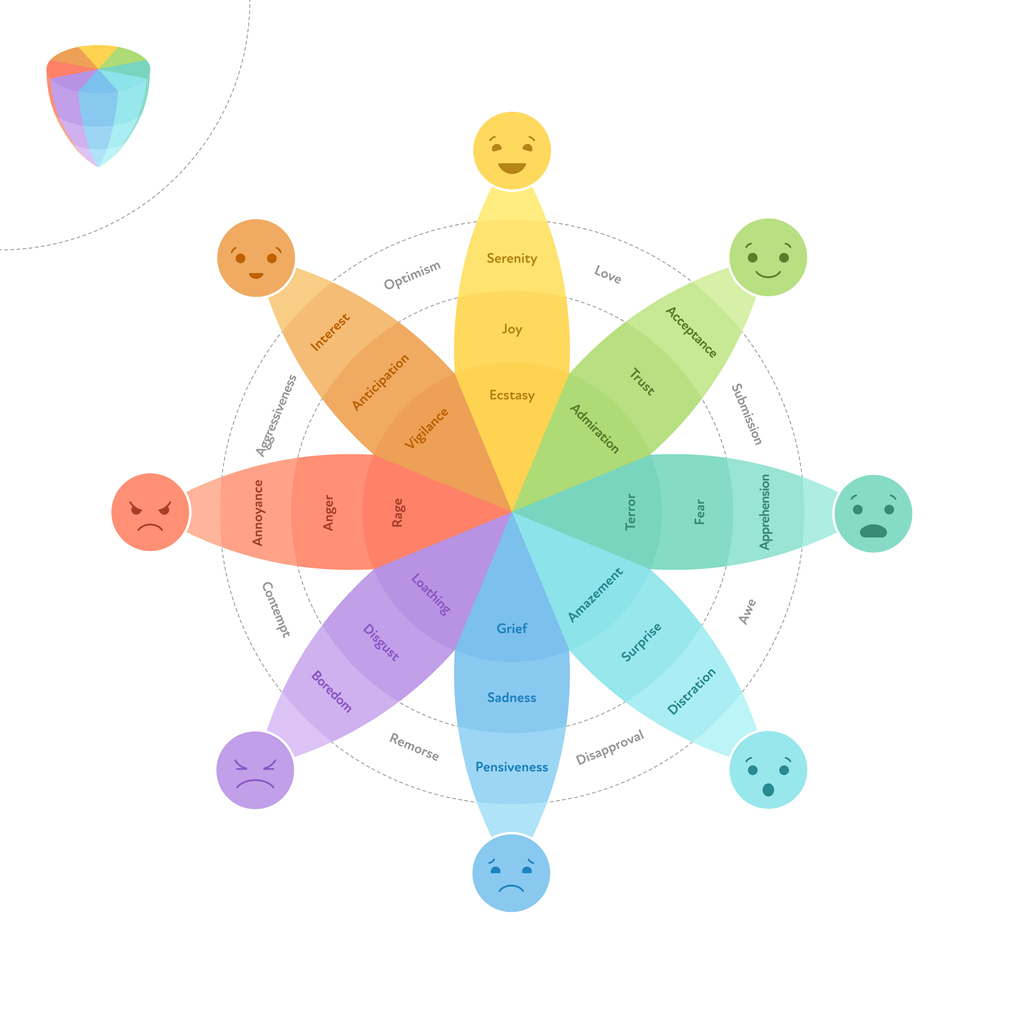
Blog
Understanding Our Emotions – Identify And Label Them

Emotions come from the Latin term ‘Emovare’ meaning “moving”. The term is a combination of the words “energy and motion”, which often captures the fleeting nature of emotions. They typically occur when activated by an internal thought, an external event, or a thought in response to an event.
Emotions help us understand and interpret what we are experiencing. Different people may feel different emotions, with different levels of intensity.
Psychologist Robert Plutchik’s model of emotions tells us that emotions are divided into 8 primary ones which are Anger, Fear, Sadness, Trust, Distrust, Surprise, Anticipation and Joy. These emotions are innate and shared by everyone across cultures. According to this model these primary emotions come first while secondary emotions like Anxiety, Panic, Hate, Envy, Shame, Guilt, Shock, Confusion, Hope come as a reaction to the primary emotions. Primary emotions are typically more transient than secondary ones and they usually reflect a more – instinctive, initial reaction, until our logical brain steps in to process the situation. Once cognition kicks into gear the way we feel about something that happened, may change. This is where secondary emotions, which can be far more long lasting, may come in.
Primary emotions are adaptive as they make us react in a certain way without the emotion being analyzed by our thoughts or our habits. As time goes on, the primary emotion is likely to fade since we struggle to connect the same emotion with the event because our emotions have changed.
Secondary emotions like guilt, shame, resentment, frustration, shock, anxiety, excitement, hope are the reactions to our primary emotions and are often learned responses, for e.g. after feeling the primary emotion of anger, you may feel the secondary emotion of shame. The purpose of secondary emotion is to cover up the sensitive primary emotions with something less sensitive. Secondary emotions are often learnt in childhood from our parents and others; they are often harder to nail as they saturate the primary emotions with complex reactions. They can also influence your behaviour and increase the intensity of your reactions.
If you are unsure as to whether you are feeling a primary or secondary emotion, ask yourself if the emotion is a direct reaction or not. If it is a direct reaction, it is likely a primary emotion, if not it is secondary.
Why is it important to identify our emotions? It’s important because they serve a purpose. Primary emotions help us identify what is triggering or upsetting us, what we need to do to cope, and what is truly going on. Although there is more cultural variation in the meaning and expression of secondary emotions, they are universal. Secondary emotions are socially constructed and constitute the learned response from our families, our culture, our communities – on how to feel and how to react to our emotions.

